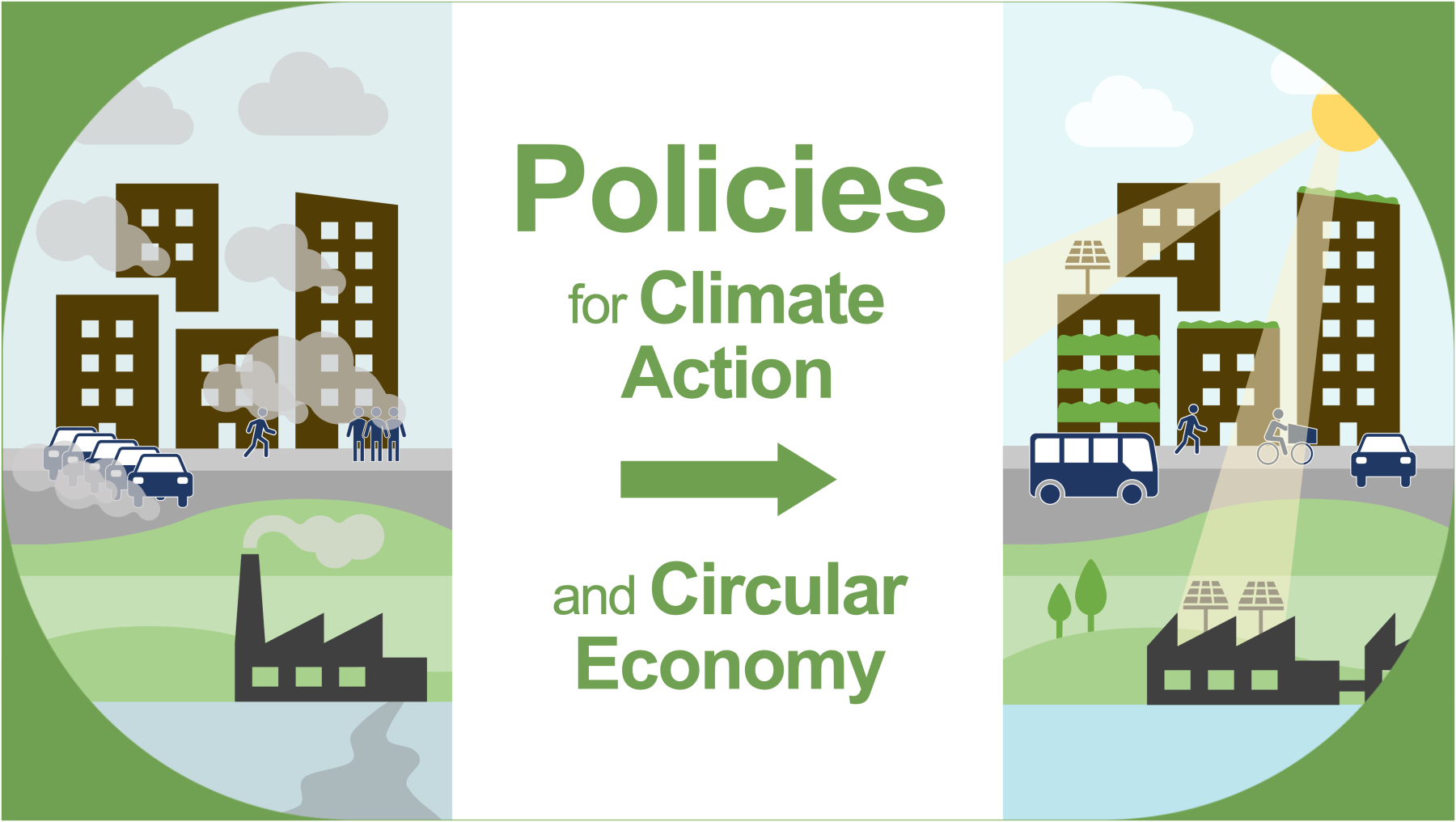
-
DURATION35 HOURS
-
SUBJECT AREAClimate Transition
Circular Systems -
COURSE LEVELFirst Cycle
-
CREDITS0.0 HP
-
INSTITUTIONSChalmers University of Technology
Open for the Climate
-
STUDY TYPEMOOC
COURSE DESCRIPTION
The course is given by Chalmers University of Technology.
VIDEOCLIP - TEASER: Take two min to get a sense of the course and hear why you should take it: https://play.chalmers.se/embed/secure/iframe/entryId/0_wvsk9cji/uiConfId/23450493/st/0
FOR WHO: The course aims at professionals working with or affected by ongoing sustainability transitions. For example, the course targets professionals such as:
- Those who work with environmental policy related business development and sustainability practice in larger corporations. Examples of typical sectors include transport, energy, food and manufacturing.
- Civil servants within authorities or municipal operations who are responsible for issues with climate relevance or circular economy.
- Professionals working with development cooperations, or in intergovernmental organizations with related issues.
- Applied researchers who want to get an introduction to the subjects.
WHAT AND WHY: In this course your invited to learn from the experience and knowledge of a world-leading expert in environmental policy instruments (Thomas Sterner) who, with the help of pedagogical experts, has cherry-picked content from a master's course at Chalmers and tailored the course structure for you as a professional. In the wake of the increased pace of ongoing sustainability transitions, environmental policies are becoming more comprehensive, complex and stringent. The purpose of this course is to give professionals an introduction to the portfolio of environmental policy instruments and equip them with tools to understand the mechanisms of the respective instruments and learn to work strategically with them in their own practice. The course will focus on topics such as climate change, the circular economy, and the energy crisis. To learn from the experience of thought leaders from several major industries, you will be able to view interviews with experts who talk about the role and implications of policies to their work and the sustainability transitions of their industry.
WHEN AND HOW: All parts of the course are free of charge, and you choose when and at what pace you want to complete the course elements. The course will be given in English, and the estimated time spent is 35-50 hours, depending on how much of the optional material you chose to study. The course offers you the possibility to tailor the learning experience as it fits best with your professional development. Therefore, it is recommended to read the course together with colleagues, to share joint learning and anchor it in your daily work. However, this is not a requirement.
WHAT YOU WILL LEARN: The course gives a broad overview of the economic concepts underlying environmental policymaking. You will get insights into the practicalities of environmental and climate policies, both from the perspectives of those implementing the policy and of those facing new regulations. On completion of the course, you will for example be able to:
- describe and recognize how environmental policy instruments work.
- identify and relate to which environmental policy instruments are key to climate action and circular economy efforts in one's own sector and organization.
The course offers a dynamic learning environment with short videos, quizzes, exercises, and resources.

courses you may also like

This course looks at where important materials in products we use every day come from and how these materials can be used more efficiently, longer, and in closed loops. This is the aim of the Circular Economy, but it doesn’t happen on its own. It is the result of choices and strategies by suppliers, designers, businesses, policymakers and all of us as consumers. In addition to providing many cases of managing materials for sustainability, the course also teaches skills and tools for analyzing circular business models and promotes development of your own ideas to become more involved in the transition to a Circular Economy. You will learn from expert researchers and practitioners from around Europe as they explain core elements and challenges in the transition to a circular economy over the course of 5 modules: Module 1: Materials. This module explores where materials come from, and builds a rationale for why society needs more circularity. Module 2: Circular Business Models. In this module circular business models are explored in-depth and a range of ways for business to create economic and social value are discussed. Module 3: Circular Design, Innovation and Assessment. This module presents topics like functional materials and eco-design as well as methods to assess environmental impacts. Module 4: Policies and Networks. This module explores the role of governments and networks and how policies and sharing best practices can enable the circular economy. Module 5: Circular Societies. This module examines new norms, forms of engagement, social systems, and institutions, needed by the circular economy and how we, as individuals, can help society become more circular.

Materials are all around us, in your house, in your phone and in the air you breathe. But what is material and why is it so important? Right now, the green transition is underway, but how do we create a more sustainable world - from raw material to product? It's all about materials. How does material feel? How are materials chosen? What are the materials of the future? Join us and discover our world of materials! The course containsIn this course we go through the basics of what materials are and why they are so important. You get to discover materials, get to know materials and be inspired by the materials of the future. The following areas are included in the course: What is material? How does material feel? How are materials chosen? How are materials recycled? What are the materials of the future? You will learnAt the end of the course you should be able to: Discover and reflect on the world and meaning of materials Get a feel for different materials Discover and analyze materials in your vicinity Understand that different materials are chosen based on the area of use Understand and reflect on the possibilities of materials and their role in the green transition Who is the course for?This is a course suitable for EVERYONE who is curious about the materials in their surroundings, regardless of background and age. The course requires no prior knowledge. It is for those of you who have an interest in a sustainable future and who wonder what role materials have in the green transition. The course is given in Swedish.

Funderar du över vad en cirkulär ekonomi innebär och hur den påverkar dig som privatperson och i ditt yrkesliv? Då ska du ta del den här korta grundkursen, som bygger på kunskaper och erfarenheter från de främsta forskarna och pionjärerna inom akademin och näringslivet. Utbildningen lyfter fram några grundläggande koncept och strategier som du kan dra praktisk nytta av såväl i ditt yrkesliv som privatliv.Om den här kursenHållbarhet är högaktuellt, för individer, företag och samhället i stort. Det är inte längre en fråga om vi har miljöproblem eller inte. Cirkulär ekonomi har lyfts fram som en ekonomisk modell och policylösning på miljöfrågor, en lösning som också hanterar sociala och ekonomiska utmaningar. Det är en ekonomi som grundas på cirkulära resurskretslopp istället för de linjära processer som hittills är dominerande. En nyckel till en mer cirkulär ekonomi är att vända resursutmaningar till möjligheter till förändring och innovation. Ökad cirkulär och effektiv resursanvändning gynnar företagens konkurrenskraft och gör samhället mer hållbart genom t ex minskad resursanvändning, minskad miljöpåverkan och ökad social rättvisa. Gör dig redo för en cirkulär och hållbar framtid! Kursen är en kort snabbkurs i cirkulär ekonomi. Du lär dig om grundläggande koncept och strategier för utvecklingen av en cirkulär och hållbar ekonomi byggd på cirkulära flöden av resurser. Kursen bygger på kunskaper och erfarenheter från de främsta forskarna och pionjärerna inom akademin och näringslivet. Kunskaper du kommer att ha praktisk nytta av i ditt fortsatta yrkesliv och privat. Det här får du lära digNär du har gått kursen kommer du att:- kunna övergripande redogöra för vad cirkulär ekonomi är- ha förståelse för grundläggande koncept kopplat till cirkulär ekonomi Vem riktar sig kursen mot?Alla som har ett intresse för cirkulär ekonomi. Målgruppen är personer som vill få en grundkunskap om cirkulär ekonomi, exempelvis:- lärare- ingenjörer- politiker- beslutsfattareKursen är öppen för alla och gratis. Det finns inga krav på förkunskaper eller särskild behörighet för att delta i kursen. UppläggKursen består av sju moduler, som sätter cirkulär ekonomi i ett historiskt perspektiv, förklarar begreppet och ställer frågan vad cirkulär ekonomi är för dig. Denna kurs kan du också läsa via vår samarbetspartner Nitus lokala lärcentra, som finns på ett flertal platser i Sverige. Läs mer via denna länk.

Vatten är den i särklass vanligaste miljön på jorden och vad som sker i haven påverkar allt liv på jorden. Även om människan inte bor i eller på vatten så nyttjar vi många ekosystemtjänster från vatten som matproduktion, transporter, elförsörjning och rekreation, och därmed påverkar eller förstör ekosystemen. För att kunna fortsätt nyttja resurser från hav och vatten eller utveckla nya värdekedjor krävs en omställning mot resursutnyttjande utan att riskera viktiga ekosystemtjänster. I denna kurs kommer du lära dig mer om akvatiska ekosystem och hur vi nyttjar och påverkar dem, men också hur resursutnyttjandet kan bli hållbart. Innehåll Grundläggande vattencykel & akvatisk ekologi Ekosystemtjänster från hav och vatten Livsmedelsproduktion, fiske & vattenbruk Havs och vattenplanering "Nature-based solutions", nya råvaror och tjänster Klimatförändringar och framtidens vatten och hav Kursens uppläggKursen ges som förinspelade lektioner och läses i egen takt. Kursen innehåller självrättande quiz för att du ska kunna kolla att du har uppnått inlärningsmålen. För att komma vidare i kursen, och kunna skriva ut ett kursintyg när du är färdig, måste du bli godkänd på quizzarna. Du kommer få kunskap omKursen ger grundläggande kunskaper om akvatiska ekosystem, ekosystemtjänster och hot. Kursen ger även kunskaper och färdigheter för att förstå vad som krävs och kan bidra till en blå omställning av resurser i vatten. Efter genomgången kurs kommer du kunna: redogöra för biologiska samband och olika ekosystemtjänster från akvatiska miljöer och dess betydelse för mänskliga samhällen, analysera hot och målkonflikter mellan olika nyttjanden av akvatiska resurser, förstå hur framtida diversifiering av vatten- och havsanvändning kan skapa en hållbar bioekonomi. Vem vänder sig kursen till?I första hand yrkesverksamma eller personer intresserade av att bli verksamma inom blå näringarna, som fiskare, vattenodlare, turistnäring, eller andra företagare inom den blå sektorn. men även vatten- och fiskerättsägare. Kursen är även relevant för tjänstemän i offentlig förvaltning (kommun-myndigheter) och journalister eller intresserad allmänhet.Kursen ges i huvudsak på svenska.

This course has an English version. Look for course with title "Why choose wood for the next high rise building?" KursbeskrivningOlika typer av biomaterial (t.ex. trä) är mycket viktiga i utmaningen att avkarbonisera byggmiljön och minska koldioxidavtrycket för byggnader och infrastruktur genom att ersätta material som stål och cement som har höga koldioxidutsläpp. Samtidigt får vi inte glömma bort att biologisk mångfald, natur och sociala värden i våra skogar är viktigt att behålla samtidigt som skogsbruk bedrivs. I kursens 13 moduler tas skogsbrukets kretslopp upp inklusive avverkningsmetoder, biologisk mångfald, skogsskötsel, logistik, skogens roll i klimatomställningen, kolinlagring, miljöfördelar med att bygga flervåningshus i trä mm. Syftet är att ni som deltar i kursen ska få en gemensam förståelse av det svenska skogsbruket för att ni sen ska kunna fatta välgrundade beslut om materialval vid nästa byggprojekt. KursperiodKursen kommer att vara aktiv under 3 år. InnehållSkogshistoria: Skogens nyttjande i Sverige genom historienSkogsbruksmetoder och skogsskötselSkogsföryngringVirkets egenskaperMätning av skog och virkeSkogsträdsförädling: nutid och framtidSkogens kolbalans och klimatetAffärsmodeller och marknadsutveckling: Fokus flervåningshus med trästommarNaturvård och biologisk mångfald i skogen Kursens uppläggKursen är helt digital med förinspelade föreläsningar. Du kan delta i kursen i din egen takt. Modulerna avslutas med quiz där du kan testa hur mycket du har lärt dig. Du kommer få kunskap omEfter avslutad kurs kommer du att ha lärt dig mer om olika skogliga begrepp, förvärvat kunskap om skogens nyttjande i Sverige genom historien, ökat dina kunskaper om skogsskötsel och hur olika skogsskötselmetoder påverkar den biologiska mångfalden i skogen, lärt dig om skogsbrukets kretslopp – från föryngring till slutavverkning mm. Vem vänder sig kursen till?Den här kursen är tänkt för dig som är yrkesverksam arkiktekt, anställd på kommun som arbetar med stadsplanering och byggande, verksam i bygg- och anläggningsbranschen samt verksam i andra relaterade yrken. Detta är en introduktionskurs och kommer att bidra till en kompetenshöjning i hela byggsektorns ekosystem vilket ökar branschens internationella konkurrenskraft, samtidigt som det ger viktiga förutsättningar för utvecklingen av framtidens hållbara, vackra och inkluderande städer. Eftersom kursen är öppen för alla hoppas vi att fler grupper, exempelvis studenter, doktorander, skogsägare och andra med skogsintresse tar kursen, tar del av inspirerande föreläsningar där vetenskaplig kunskap som producerats huvudsakligen inom SLU presenteras.För mer information kontakta kurskoordinator dimitris.athanassiadis@slu.se

This course has a Swedish version. Look for a course with the title "Varför välja trä vid nästa byggprojekt?" Course DescriptionDifferent types of biomaterials (e.g., wood) are crucial in the challenge of decarbonizing the built environment and reducing the carbon footprint of buildings and infrastructure by replacing materials like steel and cement, which have high carbon dioxide emissions. At the same time, we must not forget that it is important to preserve biodiversity and the social values of our forests. The 13 modules of the course cover many forestry related subjects, including harvesting methods, biodiversity, forest management, logistics, the role of forests in the climate transition, carbon storage, environmental benefits of multi-story buildings with wood, and more. The goal is that participants will gain a shared understanding of Swedish forestry so that they can make well-informed decisions about material choices for their next construction project. Course PeriodThe course will be active for 3 years. ContentForest history: The utilization of forests in Sweden throughout the past yearsForestry methods and forest managementForest regenerationWood propertiesForest mensurationForest tree breedingThe forest's carbon balanceBusiness models and market development: Focus on wood high risesNature conservation and biodiversity in the forest Course StructureThe course is fully digital with pre-recorded lectures. You can participate in the course at your own pace. Modules conclude with quizzes where you can test how much you have learned.You will learn aboutUpon completion of the course, you will have learned more about various forest-related concepts, acquired knowledge of forest utilization in Sweden throughout the past years, increased your understanding of forest management and how different management methods affect biodiversity in the forest, and learned about the forestry cycle—from regeneration to final harvesting, etc. Who is this course for?This course is designed for professionals such as architects, municipal employees working with urban planning and construction, individuals in the construction and civil engineering sector, and those in other related fields. This is an introductory course and will contribute to upskilling of the entire construction sector, thereby increasing the industry's international competitiveness while also providing important prerequisites for the development of future sustainable, beautiful, and inclusive cities. Since the course is open to everyone, we hope that more groups, such as students, doctoral candidates, forest owners, and others with an interest in forestry, will take the course and engage with inspiring lectures where scientific knowledge primarily produced within SLU (Swedish University of Agricultural Sciences) is presented.For more iformation contact course coordinator dimitris.athanassiadis@slu.se